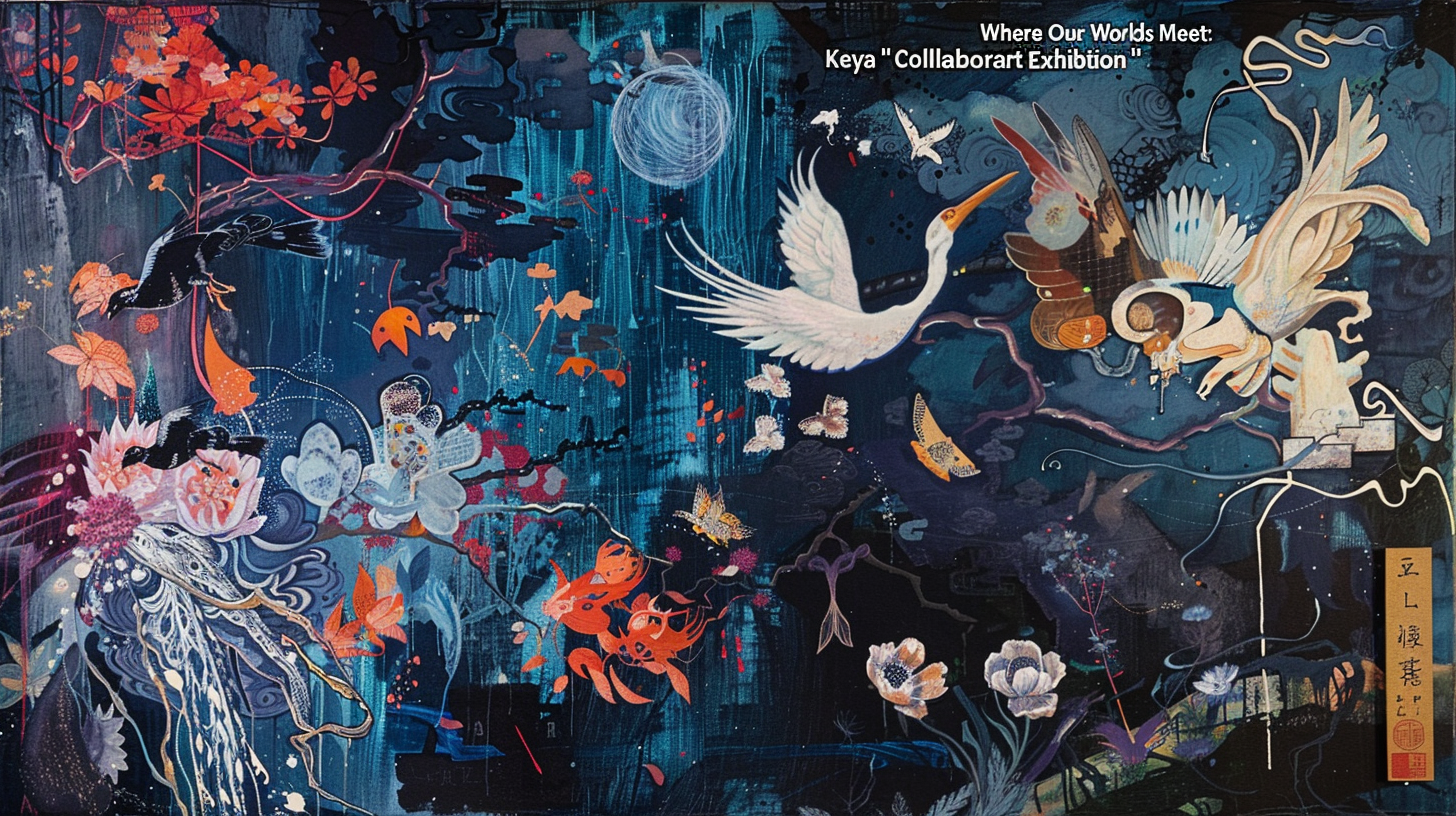
An Exploration of Collaboration: Keya Tama’s Where Our Worlds Meet
Artistic creation has long been associated with the image of the solitary genius toiling away in seclusion. However, the Where Our Worlds Meet exhibition by South African-born artist Keya Tama challenges this notion by presenting a collection of collaborative artworks created with distinguished artists from around the world. This unique approach not only offers a fascinating insight into Tama’s career but also highlights the power and potential of collaboration within the artistic community.
The Myth of the Lone Genius
For centuries, the romanticized idea of the lone artist laboring away in isolation has been deeply ingrained in our cultural consciousness. From Vincent van Gogh’s troubled existence to Jackson Pollock’s chaotic studio, the solitary genius narrative has captivated the public’s imagination. However, this narrative fails to acknowledge the rich history of artistic collaboration that has shaped the art world throughout the years.
Keya Tama’s Where Our Worlds Meet exhibition dismantles this myth, showing that great art can emerge from the collective efforts of diverse talents working together. By inviting distinguished artists from different backgrounds to collaborate on his works, Tama showcases the beauty of shared ideas and multi-perspective approaches.
A Global Tapestry of Artistic Collaboration
Where Our Worlds Meet is not just an exhibition but a testament to the globalized nature of the art world. Tama’s choice to collaborate with artists from around the world reflects the interconnectedness and cultural exchange that defines contemporary art. This trend towards cross-cultural collaboration is likely to continue and grow in the future as artists seek to broaden their horizons and engage with diverse perspectives.
Collaboration allows artists to combine their strengths, challenge their assumptions, and create art that incorporates a multitude of influences. By working with artists from different backgrounds, Tama expands his artistic vocabulary and pushes the boundaries of his own creative practice. This approach not only enriches his work but also creates a sense of community and solidarity among artists.
The Future of Collaboration in the Art World
The Where Our Worlds Meet exhibition offers a glimpse into the future of artistic collaboration, presenting a model that encourages artists to connect, exchange ideas, and create together. As the art world becomes increasingly globalized and interconnected, collaboration will play an even more important role in shaping artistic trends and fostering innovation.
In the future, we can expect to see a rise in collaborative projects that bring together artists from different disciplines, such as visual arts, music, dance, and literature. These interdisciplinary collaborations have the potential to create immersive artistic experiences that transcend traditional boundaries and engage a wider audience.
Furthermore, with advancements in technology, the possibilities for remote collaboration are expanding. Artists located in different parts of the world can now connect virtually, exchange ideas, and work together without the constraints of physical distance. This opens up new avenues for collaboration and allows artists to form global networks of creative exchange.
Recommendations for the Industry
Based on the trends highlighted by Keya Tama’s Where Our Worlds Meet exhibition, there are several recommendations for the art industry to further embrace and support collaboration:
- Promote Collaborative Spaces: Art institutions and organizations should create dedicated spaces where artists can come together to collaborate, exchange ideas, and share resources. These spaces can serve as hubs for interdisciplinary collaboration and foster a sense of community among artists.
- Facilitate International Residencies: Residency programs that facilitate international collaboration should be encouraged and supported. These programs provide artists with the opportunity to work alongside peers from different cultural backgrounds, fostering cross-pollination of ideas and artistic practices.
- Invest in Virtual Collaboration Tools: As remote collaboration becomes increasingly common, the art industry should invest in virtual collaboration tools and platforms that facilitate communication and creative exchange. These tools can help artists overcome the barriers of physical distance and allow for seamless collaboration across borders.
- Promote Diversity and Inclusivity: Collaboration thrives on diversity of voices and perspectives. Art institutions should actively seek out and support collaborations that amplify underrepresented voices and challenge established narratives. This can result in a more inclusive and representative art world.
Conclusion
Keya Tama’s Where Our Worlds Meet exhibition offers a compelling vision of collaboration in the art world. By showcasing the power and beauty of collaborative works, Tama challenges the notion of the solitary artist and highlights the potential for innovation and creativity that comes from working together. As the art world continues to evolve and become more interconnected, collaboration will undoubtedly shape its future, fostering cross-cultural exchange, pushing artistic boundaries, and creating a sense of community among artists.
References:
- “Where Our Worlds Meet: Collaborative Artworks by Keya Tama” – Harman Projects
- “The Myth of the Lone Genius” – The Guardian
- “Collaboration in Art: An Exploration of Cross-Disciplinary Practices” – The Art Story
- “The Future of Artistic Collaboration” – Artsy
